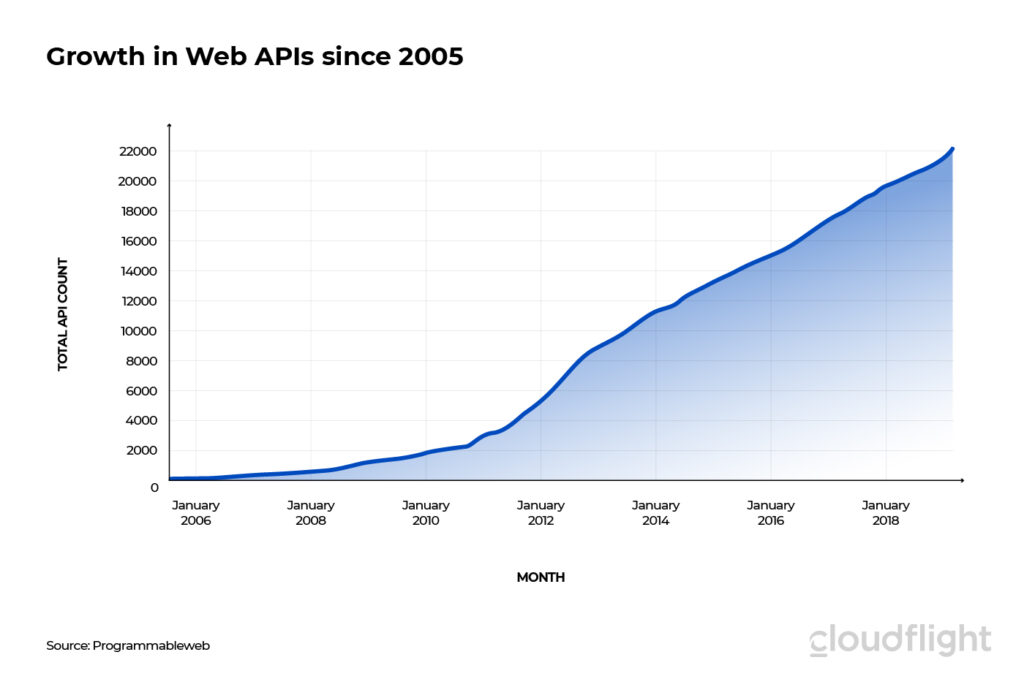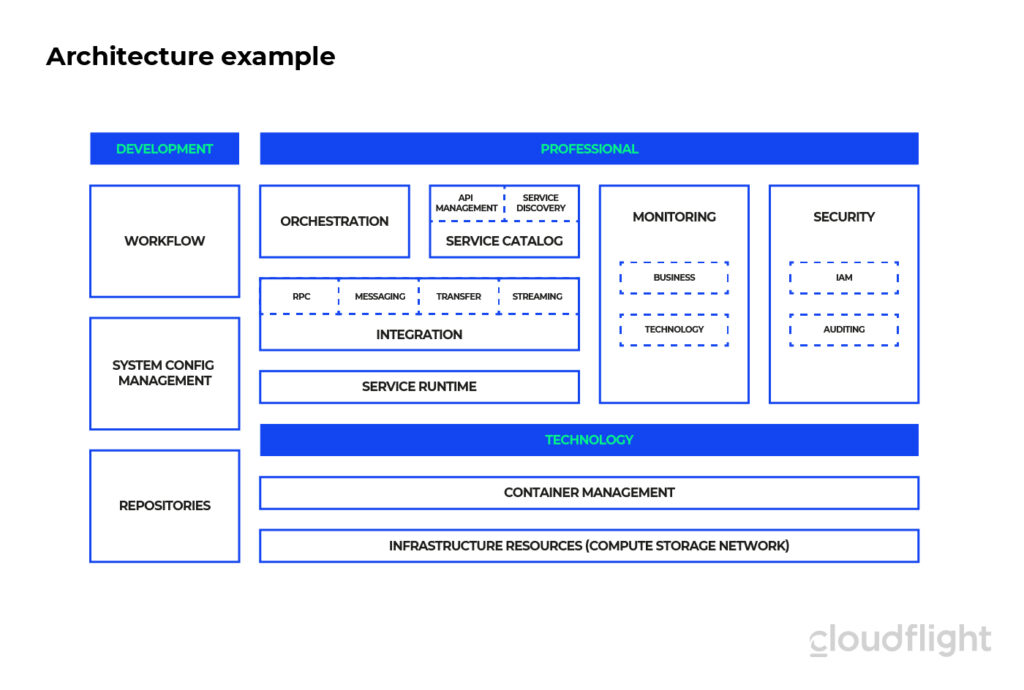In industry, almost everything runs via interfaces: from transfer points of goods that are precisely coordinated and must mesh perfectly with each other to individual work processes that run autonomously but which need information or goods from elsewhere. In the end, a good product/customer experience can be achieved only if everything works together. This also holds true for digital interfaces.
It is well known that the digital transformation is turning traditional industrial groups into software companies. The sale of machines and technologies is gradually being supplemented by intelligent software as well as by new business models based on elaborate IoT platforms on which customers and partners develop new services.
However, keeping up with the quick pace of the technological change is still a challenge for many companies in the machinery and plant-engineering sector. For this reason, professionals in this field are trying to adapt to the requirements of the market. This requires efficient production and customer interface as well as a digital, continuous, and partially automated service and system landscape.
Recommended Series: From machine constructor to platform operator
| Part 1 | Part 2 | Part 3 |
Why APIs matter
Because cloud services are far from the only thing provided via APIs, the intention of this article is to highlight the strategic relevance of Application Programming Interfaces (APIs) as “digital business enablers”. Software is also consumed as software-as-a-service and is further developed and integrated into corporate processes via web-based and standardized interfaces.
Application programming interfaces are thus becoming both the main enabler of new digital businesses as well as the link between companies, customers, and their partners. Digital interfaces are a great opportunity for the industry to assert itself in a market characterized by competition and price and quality leadership. Because process efficiency means automation, new business models mean digital networking of products and thus the generation of increasingly more data.
There are thus many interfaces and potentials along the value chain for securely integrating IT applications and the product lifecycle.
An overview across the value chain – use cases for APIs in Machinery and Plant Engineering
| Value chain in the mechanical and plant engineering industry | Example use cases | Example of API integration |
| Purchasing and logistics | Connection of supplier, vendor, and service provider for digital and media-break-free digitalization of the entire supply chain | Logistics platforms, EDI, SCM, SRM, ERP, PPS |
| Research and development | Connection of numerous applications and portals for digital mapping of processes in development (e.g., change management, variant management, and classification). | PLM, PDM, DMS, ECM, CAD, ERP, PPS, MES |
| Production | Industry 4.0, (I)IoT, Integration of Shop-floor processes with business-IT, asset efficiency, plant automation PaaS, optimization of manufacturing processes with ML/AI | ERP, PPS, MES, OPC UA, PLM, PDM, CAM |
| Quality control | Exchange of quality data, integration of quality management in production processes, purchasing, sales, logistics, manufacturing quality Management | CAQ, PLM, PDM, ERP, PPS, MES |
| Sales and marketing | Digital business models (subscription, pay-per-use) Connection of all applications and players | CRM, EDI, SCM, SRM, ERP, PPS,CMS, PIM. |
| Service and after sales | Smart services, digital usage, operating models, predictive maintenance, energy efficiency | Digital platforms for service and utilization, spare parts management, SRM, EDI, WebEDI |
APIs – a guarantor for digital business
Application programming interfaces are used in every imaginable environment today. They can be found on site as well as in private, public, and hybrid clouds. For APIs to work at the enterprise level, management tools must be able to work across multi-cloud and hybrid deployments.
Machinery and plant-engineering companies that already have a variety of APIs in use face a non-trivial challenge: organizing and managing APIs. Application programming interfaces were originally a specialized form of application integration. In the meantime, they are appearing in almost all application areas. Ready-made applications now even come with APIs; web and cloud-based digital services use APIs as a connection point.
Because of the widespread use of APIs, it is a fine line to a complex architecture – a veritable vortex of applications that keep linking to each other. Nested dependencies can wreak havoc on the performance of connected applications. These need to be mastered by a larger team and not just IT professionals. All of this makes it difficult for organizations to maintain the functionality of the API architecture.
Sensible “design criteria” for APIs can look like this:
- One API –> Uniform API design
- API first –> focus on users
- Consistent API –> no breaking opportunities
- Open standards –> usability and compatibility
- Security by design –> best practices such as strong ID, zero-trust, principle of least privilege
- Transparency about status –> monitoring, observability, e-system status is transparent (status page)
- Decentralized implementation with central coordination –> enablement through clear guidance
- Architecture decision log –> architecture decisions are traceable and transparent
- Infrastructure as code –> reproducibility and transparency
- Buying > making –> focus on business value
API – strategic tasks of IT decision-makers
Given the strategic relevance of APIs as a digital business enabler and as a gatekeeper for data sovereignty within the company (which is also where the rules according to which external stakeholders access company data and services are defined, monitored, and settled), the topic should be anchored at the highest level, and responsibility for this should be assumed. The management of API should therefore be at the top of the agenda of CIOs and CTOs as well as Chief Digital Officers or Chief Data Officers. Of course, it should also be ensured that the responsibilities and accountabilities are regulated in a sensible and practicable manner.
If APIs are viewed as a strategic task, this encompasses the following fields of action:
- API strategy – alignment with digital strategy/corporate strategy; derivation of objectives & KPIs, planning of resources and skills, definition of procedures, methods, guidelines, and use of technology; concepts for community building and developer evangelism.
- API design and architecture – data discovery and understanding, platform architecture design, API structure definition, scope and specification of API functionality, definition of API protocols, message formats, and application-level semantics
- API development – prototyping, testing, and implementation of APIs and transfer to an agile but well-defined innovation and lifecycle management; support for different development languages, frameworks and tools
- API management – lifecycle and release management, security management data governance, policy management, documentation, partner and ecosystem management
- API security – even though APIs need to access enterprise systems directly in many places (e.g., to read a delivery status from an ERP or PLM), these systems and the privacy of the data must, of course, be protected.

